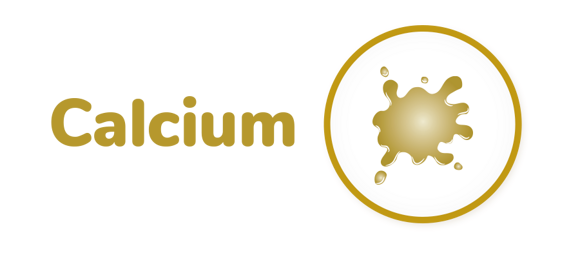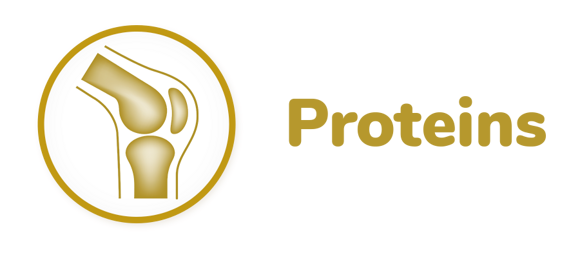Critical nutrients for bones and muscle development
Children above 3 years of age* face a critical time for bone and muscle growth.
The average preschooler will grow approximately 7 cm each year.1
As a parent, you want to make sure that your child gets the nutrients to support the building of strong bones and muscles for optimal mobility and the prevention of fractures during childhood and later in life.
A diet rich in calcium, vitamin D, magnesium, zinc, phosphorus, and protein is then extremely important.

Bone is synonymous with calcium because about 99% of calcium in our body is stored in our bones and teeth.2 It is the mineral that helps build our bones and makes them strong and hard.3
Consuming inadequate calcium through the diet can lead to weak and fragile bones.4,5 Calcium supplementation or milk intake can increase bone density and reduce the risk of fracture in adulthood.6,7
Proteins are critical nutrients required for bone and muscle health, contributing to normal bone and muscle growth and development.8,9


Vitamin D, or the sunshine vitamin, is required to develop strong bones and, most importantly, to absorb minerals, such as calcium and phosphorus, from the intestine.2,10
Vitamin D deficiency can increase the risk of rickets and fractures due to poor absorption of calcium.11,12 While exposure to sunlight for short periods is one way to get our body to make vitamin D13, your child can also get this nutrient from NANKID® Optipro, growing-up milk.
The mineral zinc contributes to normal growth, and it promotes protein synthesis, which is important for muscle growth.14,15

Encourage your child to be physically active as muscles and bones become stronger when used.16 This will contribute to a better quantity and quality of muscle later in life.
The exclusive optimized protein blend, combined with Calcium, Vitamin D and Zinc contained in NANKID® Optipro Growing-up Milk, supports your child’s bone and muscle development and contributes to the building of a solid nutritional foundation for lifelong health.
*from 3-5 years of age
References
- WHO Child Growth Standards. Accessed 17 October 2023. Available from: https://www.who.int/tools/child-growth-standards/standards/length-height-for-age
- Institute of Medicine (US) Committee to Review Dietary Reference Intakes for Vitamin D and Calcium; Ross AC, Taylor CL, Yaktine AL, et al., editors Washington (DC): National Academies Press (US); 2011. https://www.ncbi.nlm.nih.gov/books/NBK56060/
- Cleveland Clinic. Osteoporosis: Prevention With Calcium Treatment. Available from: https://my.clevelandclinic.org/health/articles/15049-osteoporosis-prevention-with-calcium-treatment Accessed on: 26 August 2021.
- NIH Osteoporosis and related bone diseases national resource centre. Kids and Their Bones: A Guide for Parents. Available from: https://www.niams.nih.gov/health-topics/kids-and-their-bones Accessed on: 17 October 2023.
- NIH Calcium Fact Sheet for Consumers. Available from: https://ods.od.nih.gov/factsheets/Calcium-Consumer/. Accessed on 17 October 2023.
- Golden NH, et al. Pediatrics. 2014 Oct;134(4):e1229-43 https://publications.aap.org/pediatrics/article/134/4/e1229/32964/Optimizing-Bone-Health-in-Children-and-Adolescents
- Weaver CM, et al. Oesteoporos Int. 2016 Apr;27(4):1281-1386 https://www.ncbi.nlm.nih.gov/pmc/articles/PMC4791473/
- EFSA Journal 2010;8(10):1811. DOI 10.2903/j.efsa.2010.1811
- EFSA Journal 2008;858:1-10. DOI 10.2903/j.efsa.2008.858
- EFSA Journal 2014;12(2):3579. DOI 10.2903/j.efsa.2014.3579
- Thandrayen K & Pettifor JM. Bone Rep. 2018 Jan 31;8:81-89. https://www.ncbi.nlm.nih.gov/pmc/articles/PMC6019962/
- Sahay M, & Sahay R. Indian J Endocrinol Metab. 2012 Mar;16(2):164-76. https://www.ncbi.nlm.nih.gov/pmc/articles/PMC3313732/
- Mead MN. Environ Health Perspect. 2008 Apr;116(4):A160–A167. https://www.ncbi.nlm.nih.gov/pmc/articles/PMC2290997/
- Branca F. Food and Agriculture Organization of the United Nations. Calcium, micronutrients and physical activity to maximize bone mass during growth. Available at: http://www.fao.org/docrep/w7336t/w7336t07.htm. Accessed on: 26 August 2021.
- EFSA Journal 2014;12(11):3891. DOI 10.2903/j.efsa.2014.3891
- Gunter KB, et al. Exerc Sport Sci Rev. 2012 Jan;40(1):13–21. https://www.ncbi.nlm.nih.gov/pmc/articles/PMC3245809/

